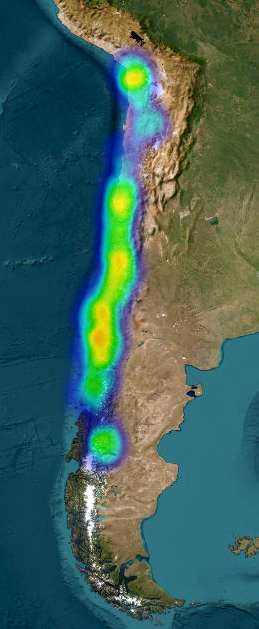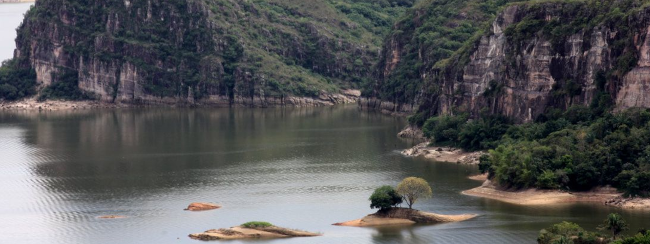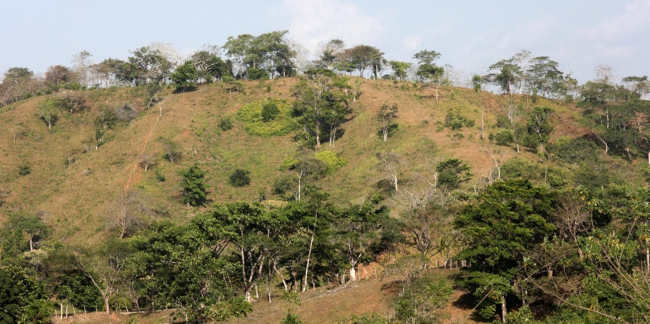Resilience of tropical and temperate forests
Drivers of functional diversity of woody plants and consequences for carbon storage
Identifying the drivers of biodiversity and their relationships with ecosystem functioning across large spatial scales is essential for strengthening the conservation and management of natural ecosystems. Chile is an excellent natural laboratory for studying spatial patterns of biodiversity’s multiple facets, given its diversity in environmental conditions and topography and unique biogeographic history. However, there are persistent shortfalls in biodiversity data in Chile that have prevented addressing such issues. Bridging extant gaps in biodiversity data and knowledge of ecosystems in biodiversity hotspots such as Chile remains a major scientific challenge.
In this project, we aim to identify the environmental, geographical, and anthropogenic factors that shape spatial patterns of woody plant diversity across Chile and to quantify the extent to which carbon storage is affected by biodiversity.

Current progress in functional trait sampling (approx. 160 woody species) across central and southern Chile (2020-2022)
Biodiversity patterns across islands at local and biogeographical scales
Island ecosystems sustain a large proportion of global plant diversity, yet are critically imperiled due to global change. They are also a natural laboratory that can be used to examine how biodiversity, ecosystem functioning, and biological invasions change from local to biogeographical scales. We use an database of forest plots on islands across the Pacific Ocean to address these questions, in collaboration with Holger Kreft (U. of Gottingen), Patrick Weigelt (U. of Gottingen), and Tiffany Knight (iDiv / UFZ). Our initial work has focused on the Hawaiian Islands and now are expanding our focus to the entire Pacific Ocean (see publications).
 Land-bridge island in Tolima, Colombia
Land-bridge island in Tolima, Colombia
Impacts of extreme droughts
With a multi-disciplinary group of colleagues, we are developing a multi-scale platform to monitor drought and its multi-faceted impacts in Chile (see Observatorio de sequía para la agricultura y biodiversidad de Chile), at national and regional scales. My team is focused on examining where and how biodiversity may buffer the impacts of the extreme drought in Chile (2010-present).

Correlation network of functional diversity and composition metrics with drought metrics of the Flora of the Aconcagua Valley (Chile)
Mechanisms underlying ecosystem stability and community responses to global change
Biodiversity experiments in grassland & forest ecosystems provide a powerful platform to identify mechanisms underlying biodiversity-ecosystem function and biodiversity-ecosystem stability relationships. Furthermore, the relative importance of biodiversity and its mechanisms, such as complementarity, may be altered by global change drivers. We primarily use synthesis to understand how generalisable these mechanisms are. Based on insights gained from these synthesis projects, we develop greenhouse & field studies to test ’next-generation’ questions.

Greenhouse experiment testing the impacts of functional diversity on belowground ecosystem functioning (Leipzig, Germany).
Resilience of tropical and temperate secondary forests
Secondary forests dominate large areas of tropical and temperate regions and have considerable potential to mitigate climate change via carbon sequestration and to act as a source of biodiversity. Therefore, it is critical to understand how biodiversity and biodiversity-dependent ecosystem functions recover in secondary forests following land abandonment. Within the Agua Salud Project in Panama, we leverage time series data across an extensive network of forest plots to explore the consequences of biodiversity change on ecosystem functioning. We also collaborate with the 2NDFOR network, in which we examine patterns and drivers of forest recovery across the tropics. In Chile, we collaborate with Pablo Donoso (Universidad Austral) to examine the relationships between multiple facets of biodiversity and ecosystem functioning in managed secondary forests.
 Secondary forests interspersed in matrix of cattle pastures in Agua Salud, Panamá.
Secondary forests interspersed in matrix of cattle pastures in Agua Salud, Panamá.
